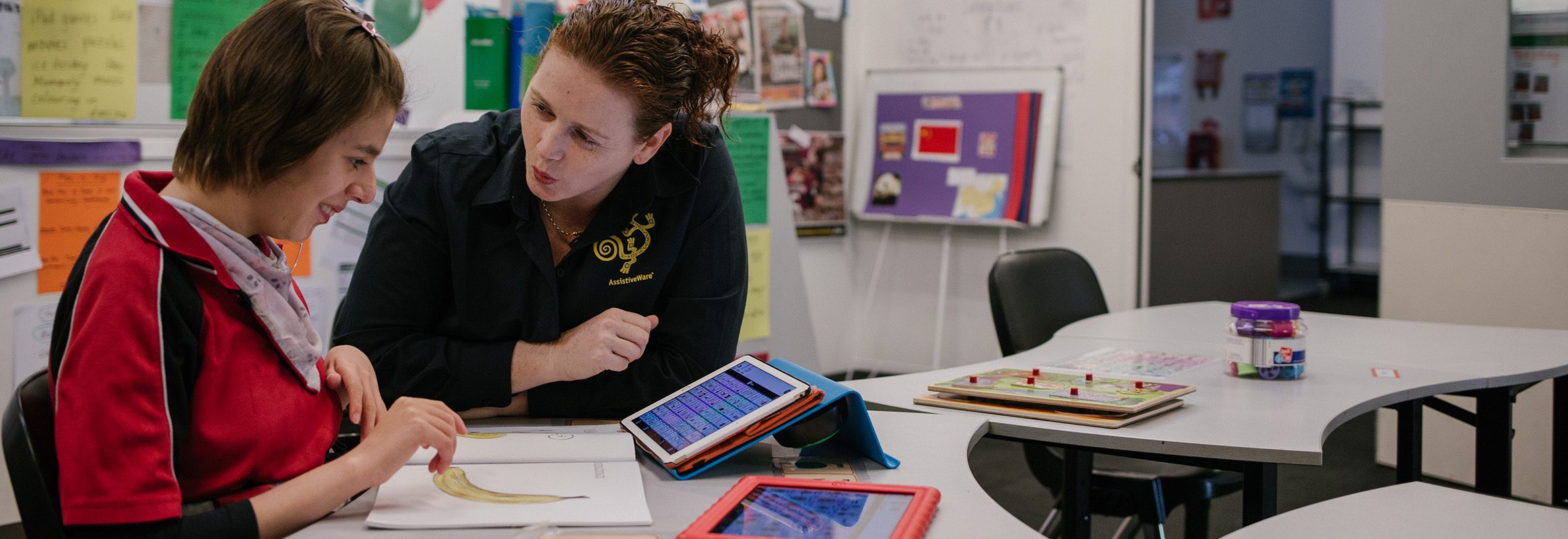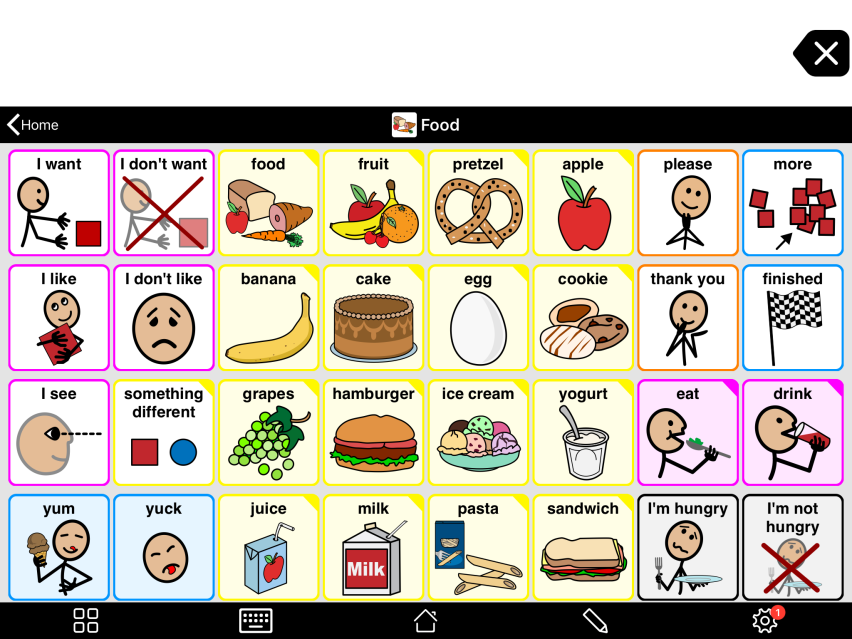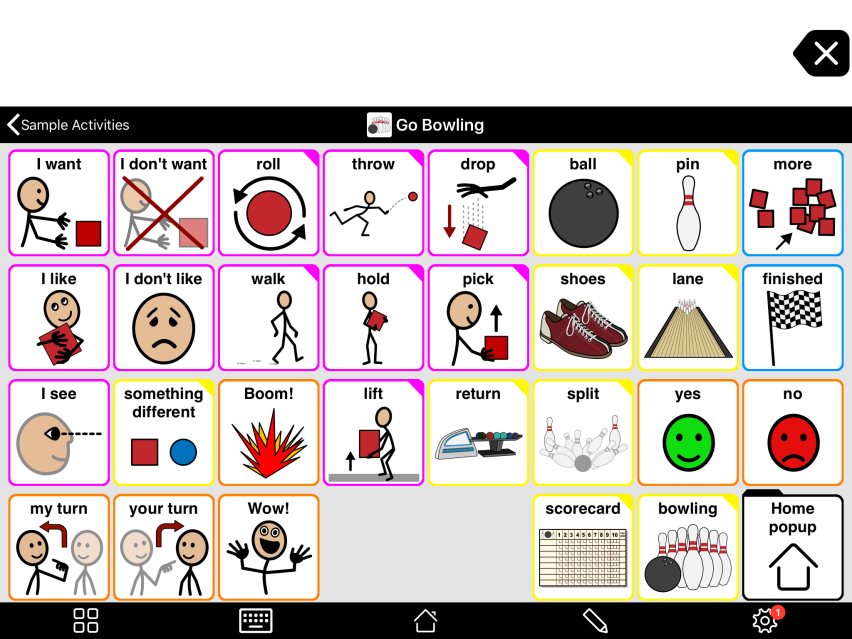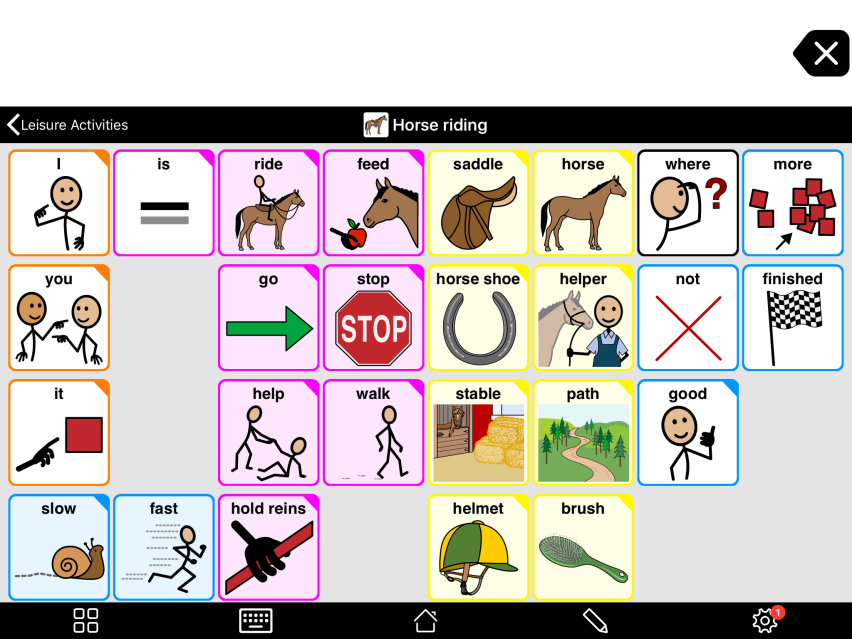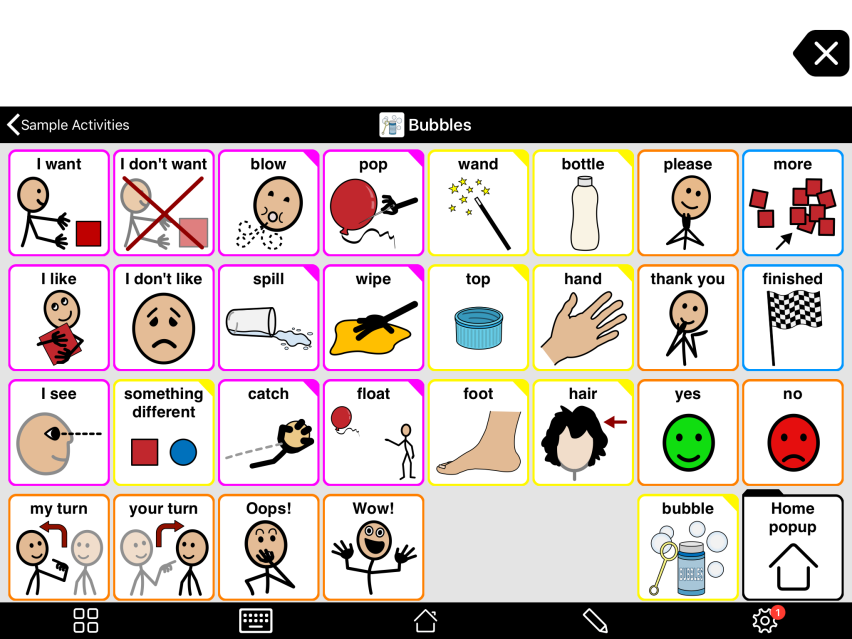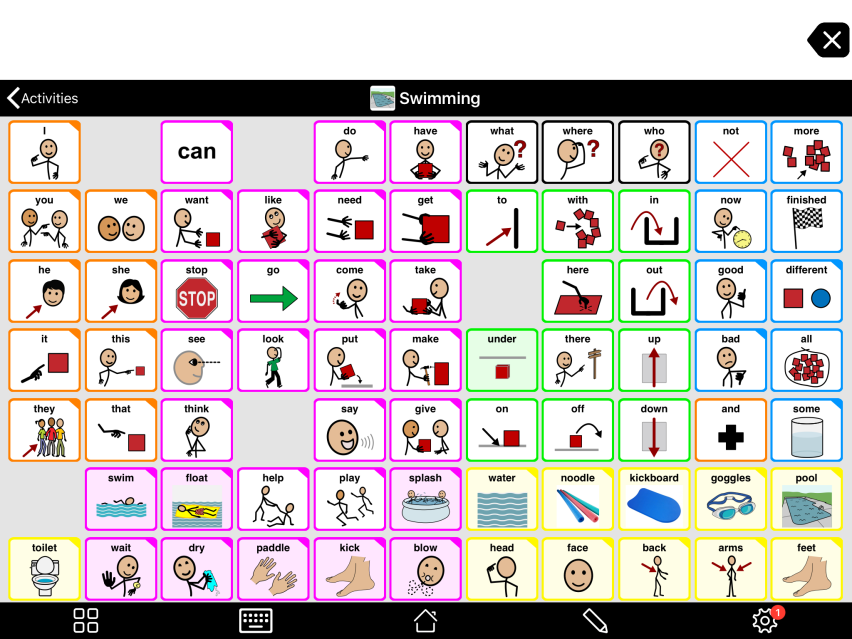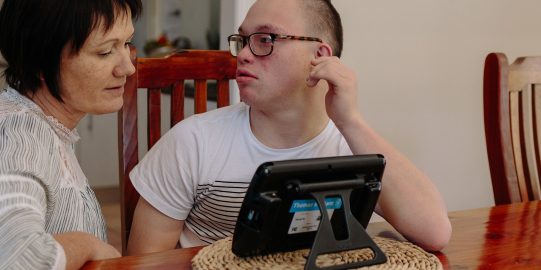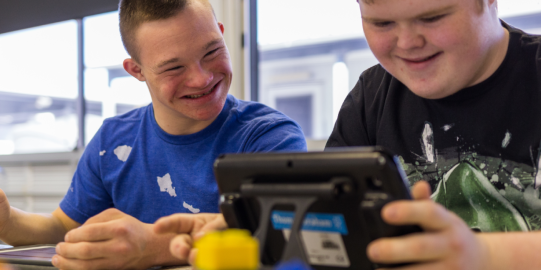4. Stops language generalizing from one situation to another
Topic boards give a person very specific words to use in a specific situation. Therefore, they may not get the chance to see those words used in different places, for different activities. How can they learn about the power and flexibility of language? For example, perhaps an AAC user has learnt to point to “blow” and “pop” on a topic board for “bubbles”. What if they need to learn to use the word “blow” when they want to blow out the candles on the cake? Or they need to use the word “pop” to describe the sound the balloon made?
Topic boards may stop language generalizing from one situation to another.
5. Time consuming
Teams can spend time making topic boards. Making one board for every activity that will be done, can take time.
Making topic boards is time consuming.
Using your balanced vocabulary
An AAC system has a balanced vocabulary when you can communicate for a wide variety of reasons using core words, fringe vocabulary and the alphabet.
Consider how we can use this vocabulary, rather than just topic boards.
We can focus on teaching and modeling words in the AAC system, during any activity! We show where words can be found and how to combine them to communicate real messages in any situation. We can focus on communicating different messages for different reasons.
We do this, rather than creating specific folders or boards for all the different activities we might do.
By using a balanced vocabulary, AAC users have far more words at their fingertips! More words gives them more opportunities to build language.
By using a balanced vocabulary, AAC users can learn where words are, so they can use them later. Try adding extra words to existing folders rather than creating an activity folder.
Topic boards - the right way!
There are times and places where topic boards can be very useful. There are many AAC users who may get their first start at communication using a topic board. This may be before they have their own AAC system.
When you decide to make a topic board, you may wish to consider a few of these ideas:
- Use a template, so that common core words can be in the same locations on any different topic boards you create.
- If you are using Proloquo2Go, you can use the folder templates and activity templates to create boards.
- Have a full core word board, alongside an topic board - just in case you need extra words!
- Be ready with the full AAC system, to model other words during the activity.
- Have a way for the AAC user to ask for their full AAC tool.
- If you are using a printed or digital PODD, remember to flip back from the Activity page. Go back to the start when you want to begin a message for a different reason.
Download Proloquo2Go Crescendo Core word boards from the AssistiveWare Core Word Classroom.
